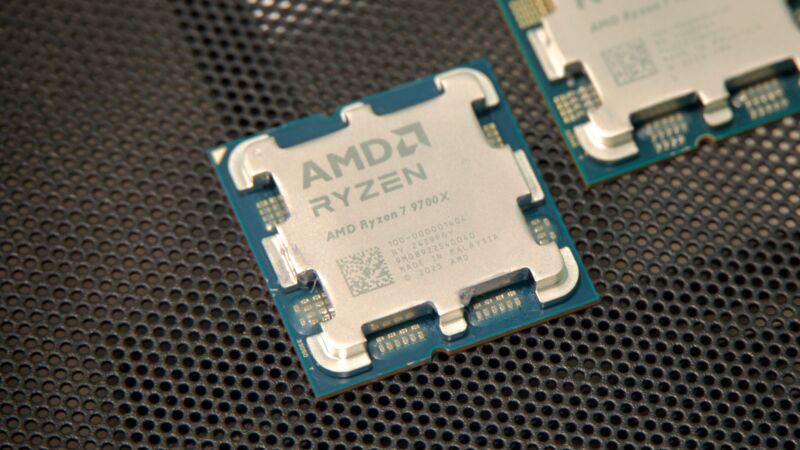
Enlarge / We (and other testers) have had issues getting the Ryzen 9000 series to behave normally.
Andrew Cunningham
AMD recently released its Ryzen 9000-series processors, which brought the company’s new Zen 5 CPU architecture to desktops for the first time. But we (and multiple other reviewers) had issues getting the chips’ performance to match up to AMD’s promises, something that the company wasn’t able to fully resolve before the processors launched to the public.
AMD has since put out statements explaining some of the discrepancies and promising at least partial fixes for some of them.
A Windows problem
The main fix for slower-than-expected game performance, the company says, will come with the Windows 11 24H2 update later this year, which will include “optimized AMD-specific branch prediction code” that improves Ryzen 9000’s performance by between 3 and 13 percent in an AMD-provided cross-section of games and benchmarks (though a handful of tests also showed no change). AMD says that these improvements will also benefit Zen 3- and Zen 4-based Ryzen processors, but that “the biggest boost” will be reserved for Ryzen 9000 and Zen 5.
Apparently, this branch prediction code improvement is already available in current Windows builds if you’re running games and apps in Administrator mode, which AMD used to run its tests. From AMD’s post, it’s unclear whether it was running games from within the normally disabled Administrator account, as has been reported elsewhere, or if it was merely running them in Administrator mode from within a standard user account.
In any case, even a standard user account with Administrator permissions spends most of its time running in a standard user mode, throwing up a User Account Control elevation message when Administrator privileges are needed for something. For security reasons, Windows only runs software in Administrator mode when it’s required, generally to install an app for the first time or make other system-wide changes. Virtually no one will be running games with Administrator privileges or while logged in as Administrator, which makes it an odd testing choice. Regardless, the 24H2 update should make those branch prediction improvements available to standard user accounts running in user mode.
The Windows 11 24H2 update should be released to the general public this fall, though Windows Insiders can also get it from the Insider Preview channel or by downloading an ISO. The 24H2 update is already the default version of Windows on Copilot+ PCs and on the Ryzen AI-powered Asus laptop we tested recently, so for most people it should be stable and reliable enough for day-to-day use.
There’s no word on whether or when these changes might come to Windows 10. But as with Intel’s Thread Director, which is not optimized for Windows 10, I wouldn’t count on AMD or Microsoft working very hard to bring significant performance improvements to a last-generation operating system that is just over a year away from its end-of-support date, even if it is still Steam’s most popular Windows version by a handful of percentage points.